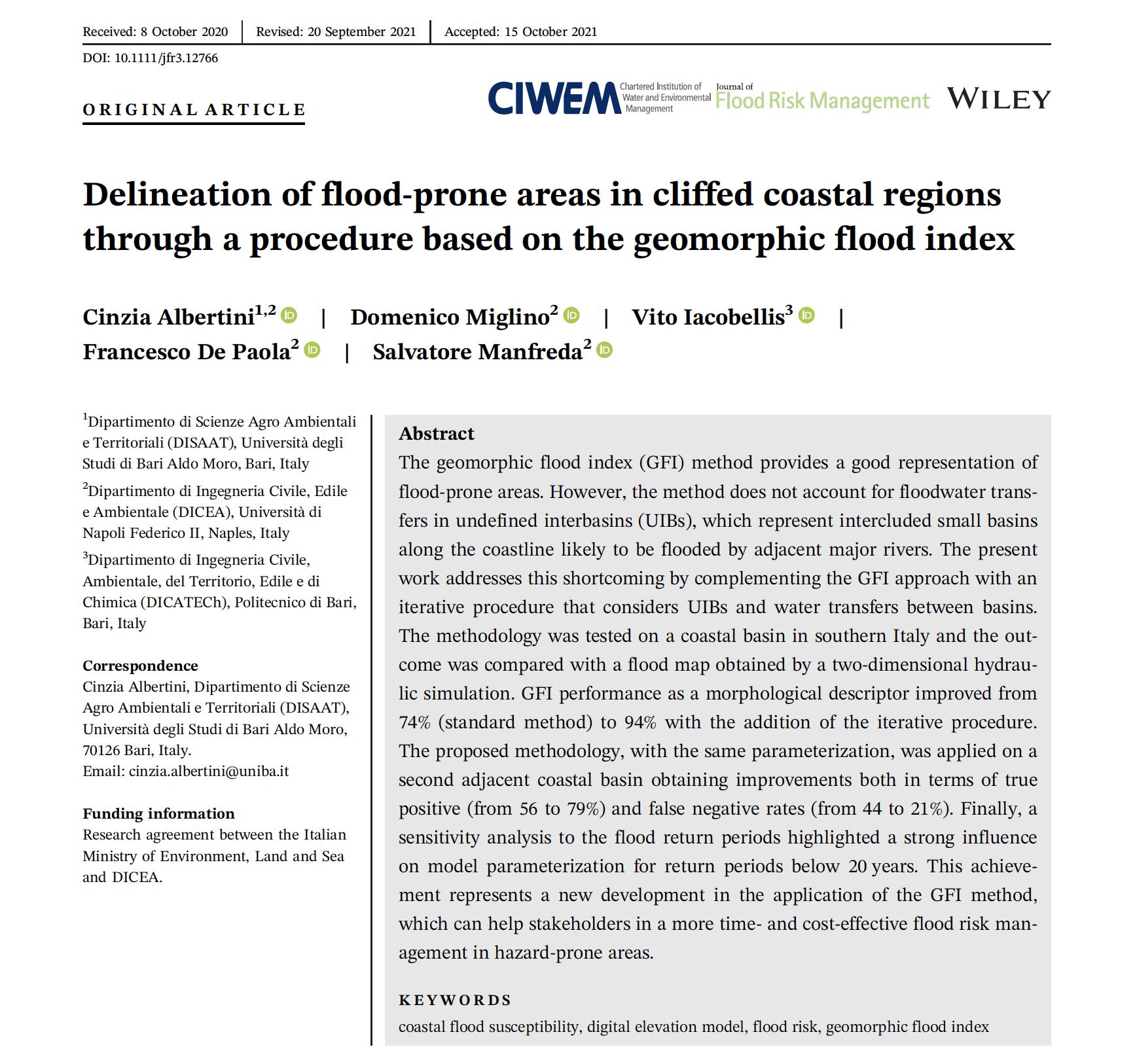The geomorphic flood index (GFI) method provides a good representation of flood-prone areas. However, the method does not account for floodwater transfers in undefined interbasins (UIBs), which represent intercluded small basins along the coastline likely to be flooded by adjacent major rivers. The present work addresses this shortcoming by complementing the GFI approach with an iterative procedure that considers UIBs and water transfers between basins. The methodology was tested on a coastal basin in southern Italy and the outcome was compared with a flood map obtained by a two-dimensional hydraulic simulation. GFI performance as a morphological descriptor improved from 74% (standard method) to 94% with the addition of the iterative procedure. The proposed methodology, with the same parameterization, was applied on a second adjacent coastal basin obtaining improvements both in terms of true positive (from 56 to 79%) and false negative rates (from 44 to 21%). Finally, a sensitivity analysis to the flood return periods highlighted a strong influence on model parameterization for return periods below 20 years. This achievement represents a new development in the application of the GFI method, which can help stakeholders in a more time- and cost-effective flood risk management in hazard-prone areas.
How to cite: Albertini, C., D. Miglino, V. Iacobellis, F. De Paola, S. Manfreda, Flood-prone areas delineation in coastal regions using the Geomorphic Flood Index, Journal of Flood Risk Management, e12766,(https://doi.org/10.1111/jfr3.12766) 2021.

